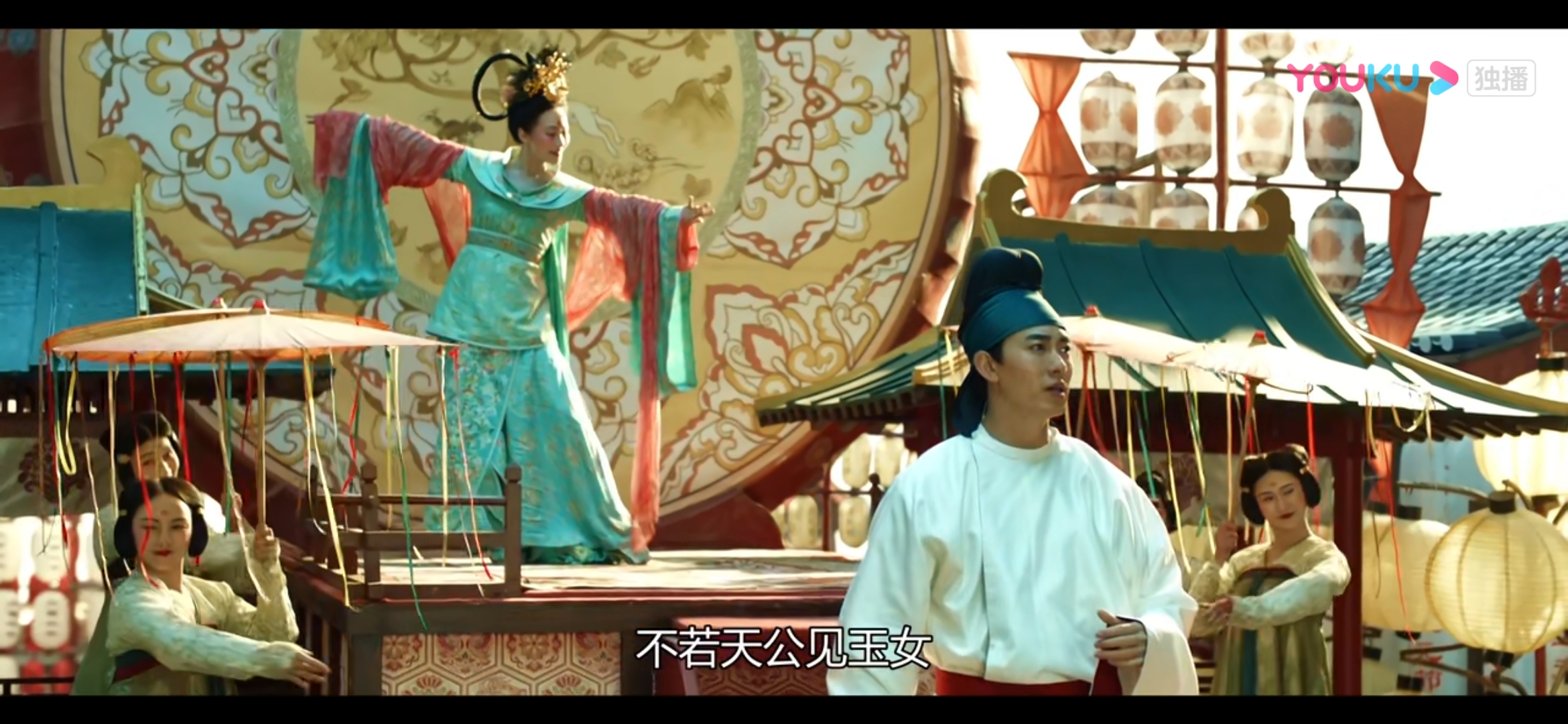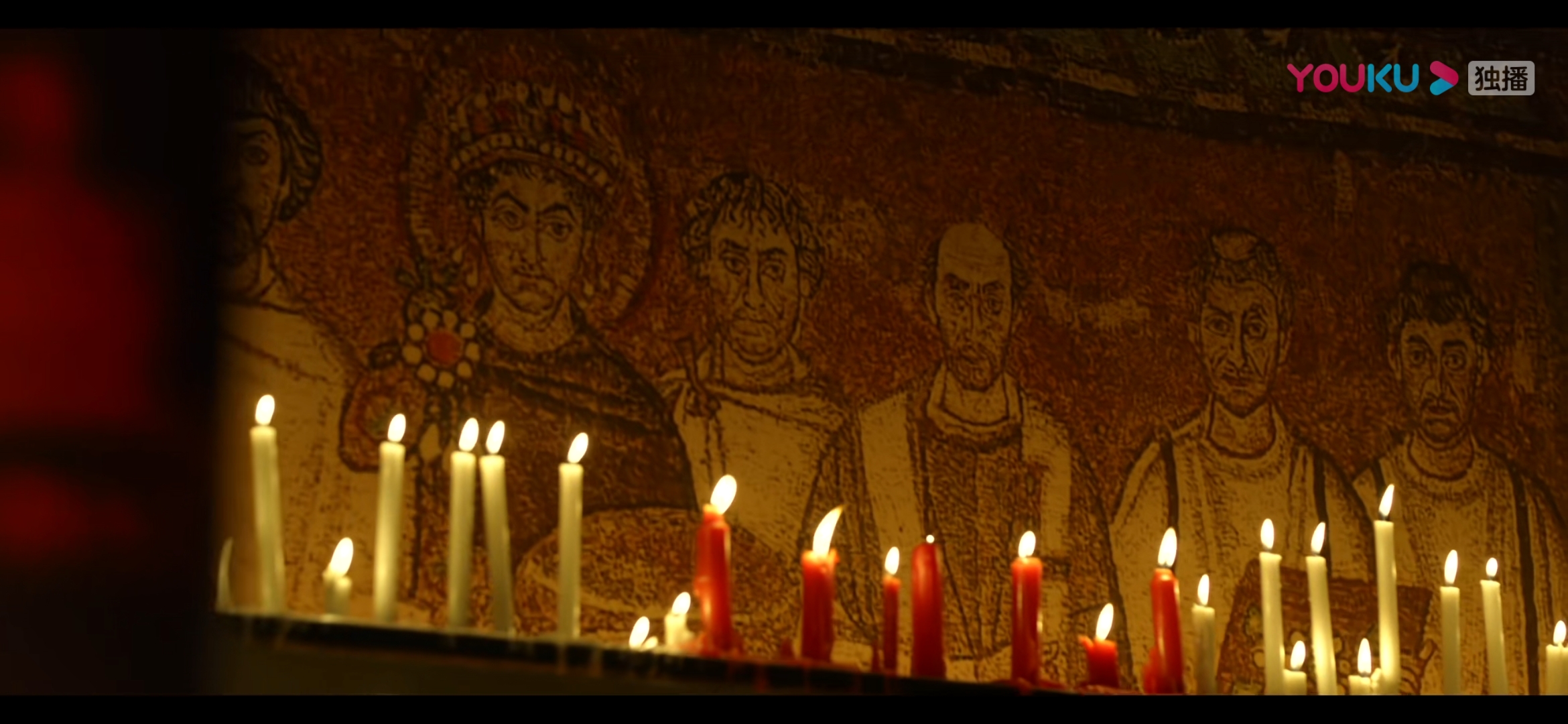-2019-07-12T164510.136.jpg)
Tang Dynasty Might Have Been China's Most Open Era
In all of human history, there was only a handful of capitals comparable to Chang’an, among which Athens and Rome. It is arguably the longest lasting cosmopolis, flooded with foreign envoys, visitors and officials speaking six different languages.
When I think of Xi'an (known as Chang'an during Tang dynasty which ruled China from 618 to 907 A.D.), I recall the spicy breakfast soup that lifts people's spirit after a long tiring day. Everything in that city feels strong, the brick walls, the street food, even the local bars bear a rough northwestern character. It is vigorous, unconstrained and down-to-earth.
Go back some 1400 years to the Tang dynasty China and this city of mouth-watering local cuisine and underground rock-n-roll was even wilder, more diversified and international than it is today. In all of human history, there was only a handful of capitals comparable to Chang’an, among which Athens and Rome. It is arguably the longest lasting cosmopolis, flooded with foreign envoys, visitors and officials speaking six different languages. And after binge watching Youku's hit show The Longest Day in Chang'an I started wondering if Tang dynasty could have been China's most liberal era.
Entertainment
Entertainment could be quite boring back in the day. The most intriguing thing about historical dramas is how they let us take a peek into a life of an average ancient Joe, who didn’t even have a smartphone. The Longest Day in Chang'an excels in that part. The show puts a lot of effort in depicting the daily lives of ordinary citizens, rather than on concubine rivalries and royal secrets, tropes so prevalent in historical dramas.
One of the most impressive scenes of the show happens when a sing-song girl wearing ornate clothing and heavy makeup climbs onto a tall terrace and suddenly catches the attention of numberless passers-by. She dances like a fairy while her brother plays the flute and sings along with her. They are like a modern day duo, receiving massive applause and cheers from the crowd with every single move. Even a guy on a military mission couldn't help but pause it for a moment to take a look.

According to historical records, in Tang dynasty, renowned sing-song girls would be specifically recruited into emperor's palace to stage dazzling performances. During royal banquets, emperor Xuanzong would ask a eunuch to shout from the top of a building, “I will ask Nian Nu (name of the sing-song girl) to come out to sing, would you all please just be quiet!” The emperor himself was actually a music lover, who would play drums in the royal band.
Sexuality
In Tang dynasty, people were more open about sex than even nowadays. According to historical records, prostitution reached unprecedented levels during Tang era. “Officials in the Tang dynasty loved prostitution, from the emperor's counsel to staff assistant. There is hardly anyone who wouldn't do it. And there were the most bizarre things you couldn't possibly imagine,” recounts a book unambiguously titled History of Prostitution in China. Back then, visiting high-end brothels was not considered corrupt for high-ranking officials. Famous poets and writers would write accounts of their somewhat immoral love affairs in their literary works, and pass them down to later generations.
-2019-07-12T164850.597.jpg)
Here is, for instance, a verse from a famed Chinese poet Du Mu active during the late Tang period,
“She is slim and supple and not yet fourteen,
The young spring-tip of a cardamon-spray.
On the Yangzhou Road for three miles in the breeze
Every pearl-screen is open. But there's no one like her.”
Mind you, “the three miles on the Yangzhou road” refers to a bustling hub for prostitutes and brothel visitors. Distinguished escorts, boasted a rather high social status. Some of them came from declined rich families, and were well-educated from an early age. Furthermore, they didn't necessarily have to sell their bodies for money, and could choose their own company. In the meantime, there were of course lower-end options for ordinary folks, who could not afford to marry.
Gender equality
You might think in the Chinese traditionally patriarchal society, men maintained their dominance over women throughout the whole course of history. Well, this does not necessarily apply to the Tang dynasty. Think of the first and only empress regnant Wu Zetian. During her 15 years of reign, many women bore high ranks in the government. Due to the influence of foreign culture, quite like today's Beijing or Shanghai, Chang'an provided a more favorable and open social atmosphere for women. Girls were no longer strictly confined within the courtyard of their house.
In Longest Day in Chang'an, a girl serves as assistant to the emperor's counsel, outsmarting a swordsman competing against her.
Foreigners
According to a renowned British scholar Joseph Needham, “In history, Tang dynasty was the time when all foreigners were welcomed in the capital.” Yet, what might come along with this inclusiveness are clashes and conflicts, but also a beautiful fusion of civilizations.
Historical records state that the total population of Chang'an during Tang dynasty reached over 1 million, of which 50,000 were foreigners coming from Persia and Arabia as well as from other parts of Asia and the Middle East. They arrived in this cosmopolis to study, do business or preach their religions, wishing to learn the culture and systems of the great Middle Kingdom. They were welcomed to hold positions in the government, start companies (jewelry and clothing shops) and families.
However, not all foreigners achieved decent social status in Tang dynasty. As depicted in The Longest Day in Chang'an, the gangster leader, played by African-american actor Djimon Hounsoul, used to serve as a “Kunlun slave” in rich Chinese households. It's not hard to tell from his exotic look that he comes from a distant country. Born in slavery and misery, he later rises up to become the king of the “underworld”.

Kunlun slaves were used as laborers and servants by aristocrats, powerful ministers and wealthy merchants. Some were gifted by Southeast Asian countries, some of them were bought from pirates or merchants traveling from Southeast Asia and the Middle East.

Religion
In the show, a zoroastrianist priest holds a cane with a fire symbol, while reciting his prayers. He insists that an offender be burnt by fire, a common punishment according to their belief. The people in red cloaks behind him are his pious followers, all of whom form a bizarre display on the busy street of Chang'an. On the other side, the leader of the gang is performing a sacred ritual wearing a white cloak with a cross on his chest.

Zoroastrianism, is one of the world's oldest religions that is still practiced today. As the national religion of the ancient Persian empire, it was one of the most influential religions in Middle East and west Asia before the birth of Islam. Its major features, such as Messianism, judgment after death, heaven and hell, and free will have had a deep influence on modern belief systems, including Christianity, Islam, and Buddhism.

As seen in the show, Islam and Christianity had an influence on inclusiveness and foreign policies in the Tang dynasty China. Nestorianism, a branch of Christianity, spread to Chang'an in 635 A.D., and the emperor allowed Christians to build their own churches. In the seventh century, Islam spread all the way from Arabia to the borders of China. Prior to that, Zoroastrianism, came to China from Persia during the northern Wei dynasty (386 to 534 A.D.), and reached its prime during Tang dynasty.






